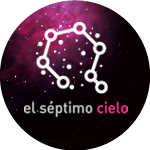Weather
Discover the weather data from the Calar Alto station.
CAHA webcams
Live access to cameras of Calar Alto.
Fireballs
Take a look at the incredible meteorites and fireballs captured.
Visit Caha
Visit our facilities.
Weather
Discover the weather data from the Calar Alto station.
CAHA webcams
Live access to cameras of Calar Alto.
Meteors and Fireballs
Take a look at the incredible meteorites and fireballs captured by the observatory's cameras.
Visit Caha
Visit our facilities.
ABOUT THE HISPANIC ASTRONOMICAL CENTER IN ANDALUSIA
The Hispanic Astronomical Center in Andalusia (CAHA), also known as the Calar Alto Observatory, is the largest astronomical observatory in the European continent, located in Calar Alto, a plateau 2168 m high in the Sierra de Filabres, in the province of Almería, Spain.
Founded in 1973 following an agreement between the German and Spanish governments, the observatory has five telescopes with different apertures and optical systems, with the 3.5 m telescope being the largest telescope on the European continent. The observatory is jointly operated by the Institute of Astrophysics of Andalusia - CSIC and the Andalusian Government since 2019 and conducts cutting-edge scientific research in various fields of astronomy, such as the search for exoplanets, star formation, galactic structure, and cosmology.
Last News
Research and projects

To observe at Calar Alto,
the largest observatory within continental Europe, you have to follow the instructions detailed in the Call for Proposals page.
At the 2.2m and 3.5m telescopes there are two possibilities to perform the observations: visitor and service mode. In visitor mode you must be at the observatory and will be assisted by the CAHA staff for the control of the telescope and instrumentation. In service mode, the observatory staff will perform the observations for you. In this case you must previously indicate all the relevant details concerning the instrumental setup and observing strategy required to carry out your proposal. You can find all the available instrumental possibilities on the instrumentation page.
Visit the Observatory
Spain is a global power in the production of scientific knowledge in the disciplines of astronomy and astrophysics, and the Calar Alto Astronomical Observatory, the largest complex of its kind in continental Europe, has been largely responsible for this over its 50 years of existence.
During the Daytime Visit to the Observatory, you will have the opportunity to learn in an enjoyable and entertaining way how this Scientific and Technical Singular Infrastructure (ICTS) works. From this cathedral of science, we will tell you about the discoveries that are made with these giant telescopes, as well as the relationship between the technological development necessary to expand our knowledge of the Universe and the domestic applications of this technology in our daily lives. And all this while you contemplate the 240 tons of the 3.5m telescope, the largest on the continent! The approximate duration of the visit is 2 hours and it is guided by qualified personnel with scientific training.
More English (UK)
English (UK)





























